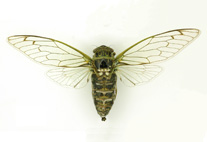Abstract
The aims of this study were to produce a checklist of the metazoan parasites of fishes from the Celestun coastal lagoon and to determine the degree of faunal similarity among the fishes based on the metazoan parasites they share. A checklist was prepared including all available records (1996–2014) of parasites of marine, brackish water and freshwater fishes of the area. All of these data were included in a presence/absence database and used to determine similarity via Jaccard’s index. The results indicate the presence of 62 metazoan parasite species infecting 22 fish species. The number of metazoan parasite species found in the fishes from the Celestún lagoon is apparently the highest reported worldwide for a tropical coastal lagoon. The parasites included 12 species of adult digeneans, 27 digeneans in the metacercarial stage, 6 monogeneans, 3 metacestodes, 9 nematodes, 2 acanthocephalans, 2 crustaceans and 1 annelid. Forty parasite species were autogenic and 23 were allogenic and 1 unknown. The overall similarity among all of the species of fish with respect to the metazoan parasites they share was low (0.08 ± 0.12), with few similarity values above 0.4 being obtained. This low similarity was due primarily to the presence of suites of parasites exclusive to specific species of fish. The autogenic component of the parasite fauna (40 species) dominated the allogenic component (21 species). The most likely explanation for the large number of fish parasites found at Celestún is the good environmental condition of the lagoon, which allows the completion of parasite life cycles and free circulation of euryhaline fishes from the marine environment bringing marine parasites into the lagoon.

